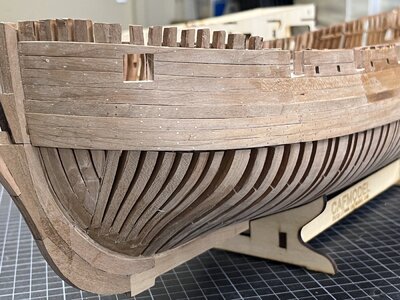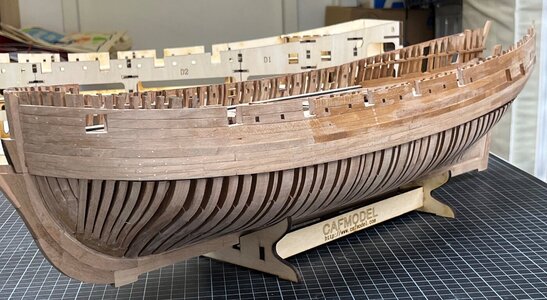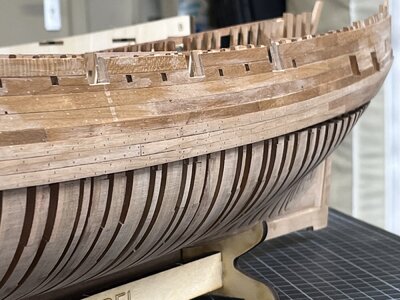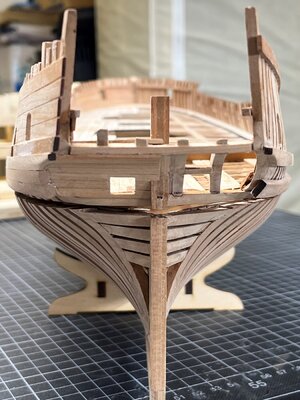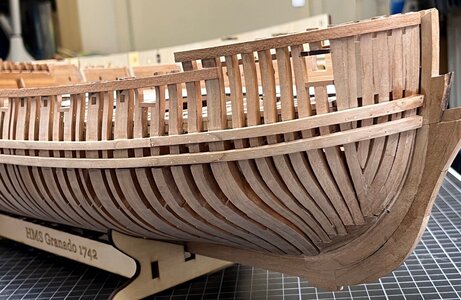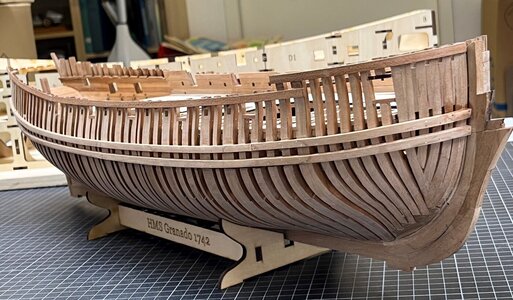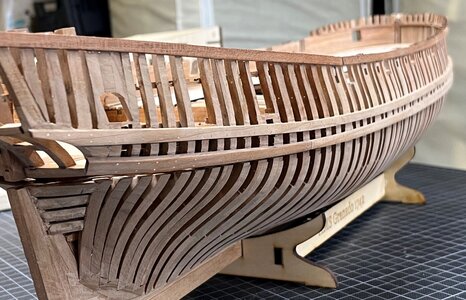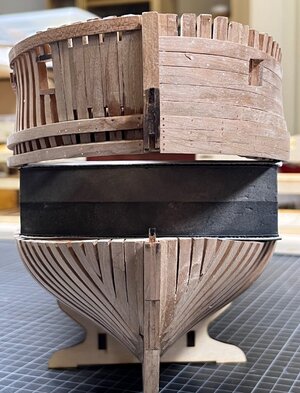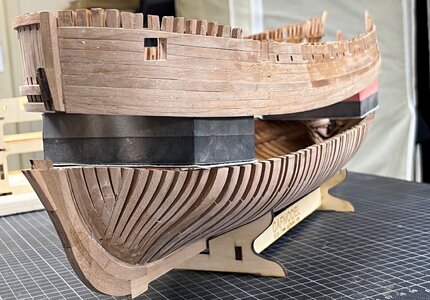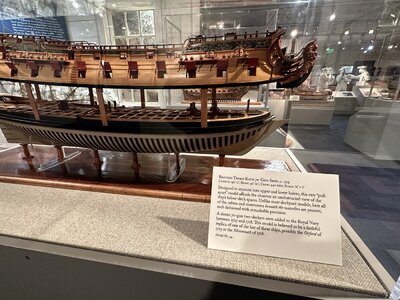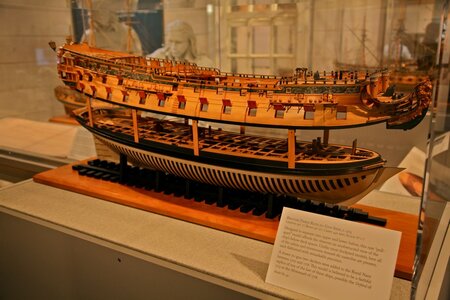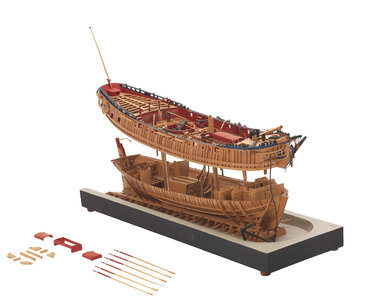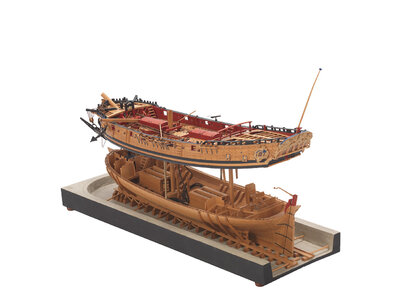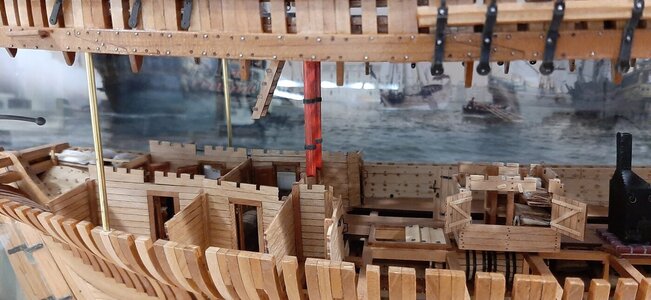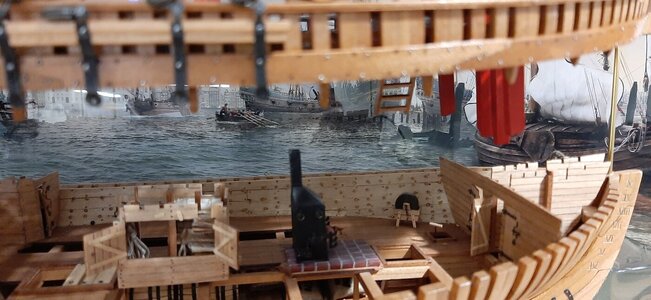Many thanks to
@Steef66 ,
@Tobias ,
@pianoforte ,
@RDN1954 ,
@shota70 ,
@dockattner ,
@Hoss6262 ,
@Nomad and,
@AnobiumPunctatum for your kind words and the continuously interest in my building log
and all others also for the likes received - Many Thanks for the Interest
Uwe, your planking has one small mistake, which you can fix really quick. All planks including the thick stuff (Barkholz) have at the rabbet the same thickness.
Hallo Christian,
I am not so sure about your comment that the wale thickness was reduced at the bow, so that they planking including the thick stuff would fit into the rabbet.
I know that you have a big knowledge and a specilist in research, so therefore I have first doubts with my knowledge.
Let us take first a look at Goodwins plans and information in his Anatomy book
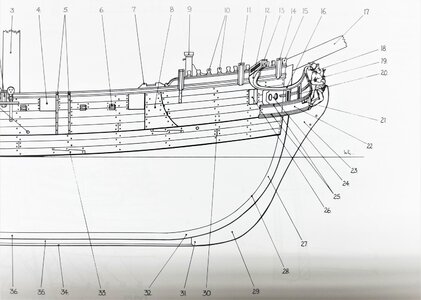

we can see, that Goodwin is showing the wales thicker than the normal planking
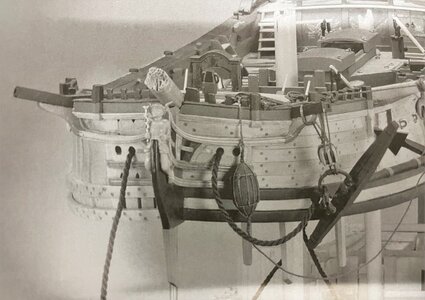
Independent of the technical correct way, I feel comfort knowing, that the step in thickness will be later on covered by the head rails and timbers
I was searching for photos of bows in the web and found f.e. the HMS Victory during a bow repair of the fore part of the wales
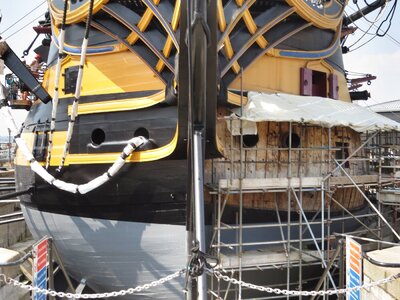
here a photo showing the left side in old status and the right side shortly after the repair
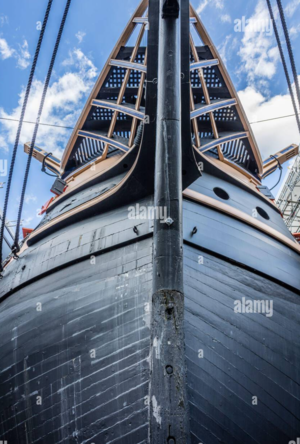

Definitely we can see here a step in the thickness
also great modelers are not adjusting the thickness of the thick stuff at the bow
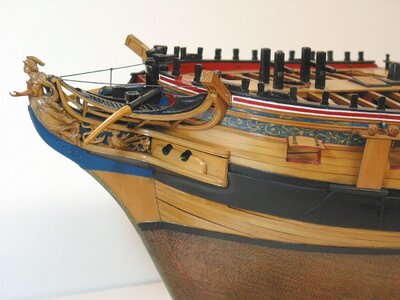
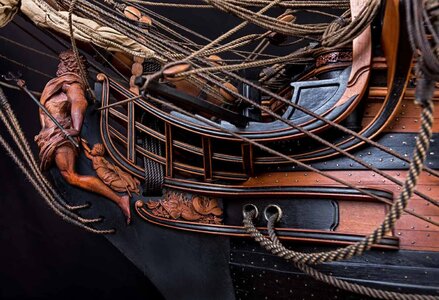
(no contemporary model)
I am asking myself now, if the shipwrights adjusted maybe the width of the rabbet in these areas where thick stuff
F.e. the Bonhomme Richard has no step from the normal planking towards the wales - here the planking was getting thicker and thicker up to the final thickness of the thick stuff?
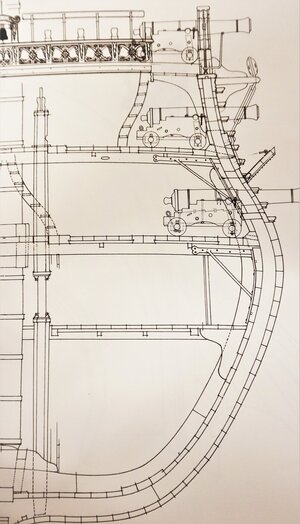
or something like this?
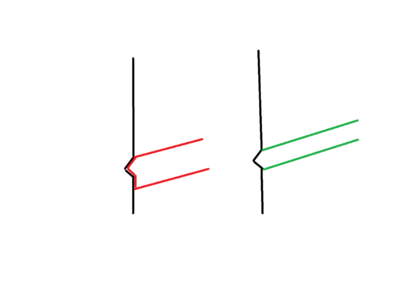
in green normal planking and in red thick stuff
For me the biggest question:
Why would the shipwrights reduce the thickness of the thick stuff, because they are a crucial part of the structure taking over main parts of the forces working in such a hull - this would weaken the structure ......


















